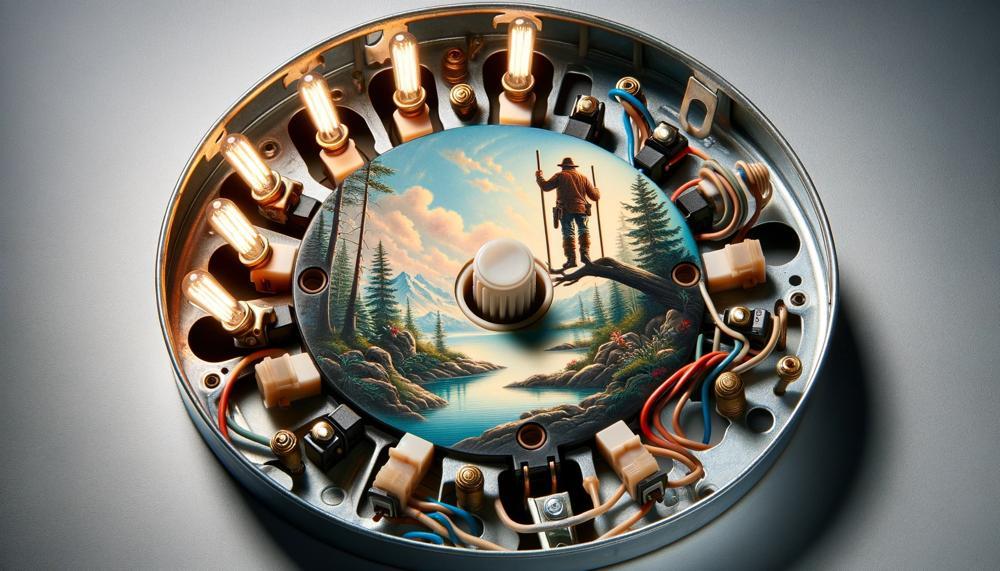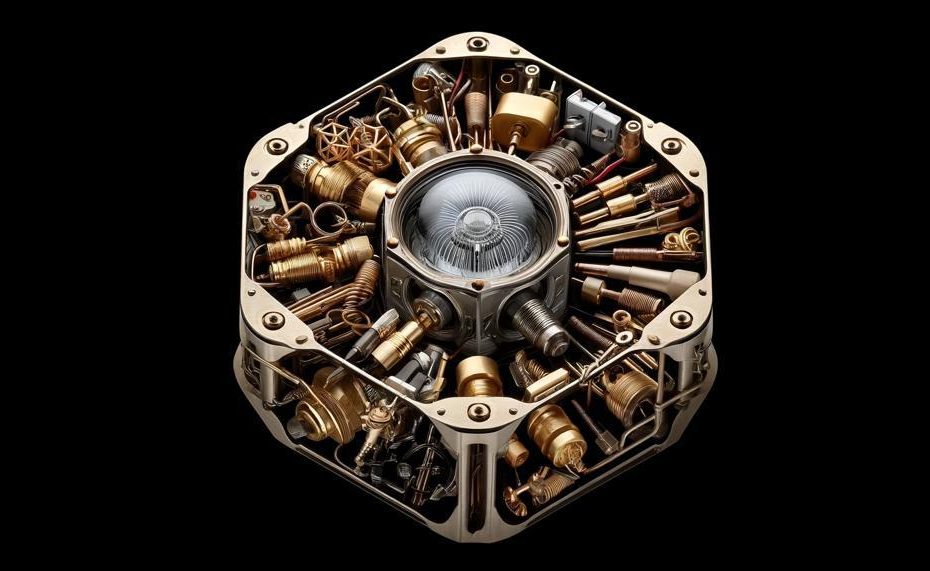When your sanctuary suddenly dims because of a stubborn light fixture refusing to do its job, it can throw off more than just your lighting scheme—it can disrupt your mood and the ambiance of your entire space. Before you sit in the dark or call in the cavalry (a.k.a. the electrician), know that there are a few tricks you might try to bring back the light. In this post, we’ll guide you through the nooks and crannies of troubleshooting a non-functional light fixture, armed with nothing more than a bit of knowledge and some DIY spirit.
Whether you’re facing the mystery of a new fixture that won’t light up or an old friend that’s suddenly gone dark, the solutions might be simpler than you think.
So, how do you Fix light fixture not working?
Here are some things you can try if your light fixture isn’t working:
- Check the bulb: Make sure the bulb is not burned out and fits tightly in the socket.
- Check the switch: Remove the switch from the wall by the mounting straps, test the terminals, and turn off any additional circuits. Loose wire connections at the switch can cause problems.
- Check the circuit breaker: Resetting the breaker at the main electrical panel can restore electricity flow and fix the light switch.
- Check the ballast: For fluorescent lights, use a multimeter to check the ballast. Insert one probe into the wire connector, then touch the other probe to the ends of the yellow, red, and blue wires. If the needle doesn’t move, the ballast needs to be replaced.
- Clean the terminals: If the fixture is working but the bulb won’t light, the terminals may be corroded. Unplug the lamp or turn off the switch and breaker, then rub the inside of the socket with a rag or toothbrush soaked with isopropyl alcohol. If you see rust, scrub it off with the toothbrush or use a small piece of sandpaper.
Contents
- 1 How To Fix Light Fixture Not Working?
- 2 Troubleshooting Steps Before Calling a Professional
- 3 Replacing a Burnt-Out Bulb: The First Fix to Try
- 4 Checking Wiring Connections for Loose or Damaged Wires
- 5 Diagnosing Faulty Light Switches and How to Replace Them
- 6 Exploring Internal Wiring and Components
- 7 Safety Precautions When Dealing with Electrical Systems
- 8 Conclusion
How To Fix Light Fixture Not Working?
To tackle the conundrum of a non-functioning light fixture, we must first sift through the usual suspects behind this illuminating mystery.
Here’s a table laying out the common culprits and their respective remedies, served with a side of simplicity and clarity for the DIY enthusiasts and home decor aficionados.
| Common Reason | Diagnosis | Fix |
| Burnt-out Lightbulb | Light ceases to shine; often the first check. | Replace the bulb with a new one, matching the fixture’s specifications. |
| Dirty/Flattened Socket | Poor connection due to debris or a flattened conductive tab. | Clean the socket gently; use a non-conductive tool to slightly lift the tab. |
| Short Circuit, Circuit Overload, or Ground Fault | Fixture not working, possibly accompanied by a tripped breaker. | Reset the circuit breaker or GFI socket; identify and resolve the overload or fault cause. |
| Bad Wiring | Loose or damaged wires within the fixture or its connection points. | Tighten connections or replace damaged wires. When in doubt, consult an expert. |
| Faulty Ballast (for fluorescent lights) | Flickering light, buzzing sound, or partial illumination. | Replace the ballast or the fixture if the issue persists. |
Diving deeper:
- Safety First: Before poking around, make sure to switch off the breaker. A voltage tester can be your best mate here to confirm no current is running. Donning rubber gloves isn’t a bad shout, either.
- Lightbulb Lore: Not all bulbs go gentle into that good night; some just need a snugger fit. Before you bin a seemingly defunct bulb, give it a gentle twist to ensure it’s properly seated.
- Circuitry Sleuthing: A tripped circuit breaker or a blown fuse often hints at deeper electrical narratives. If resetting doesn’t keep the lights on, you might be dealing with a plot twist that calls for professional insight.
- Switch Shenanigans: Sometimes, the light switch plays the villain. A non-responsive switch could be cutting off your electrical flow. A quick switcheroo might just be the hero you need.
- Expert Consultation: When the going gets tough, the tough call in the cavalry. If you’ve tried your hand with no luck, or if wiring diagrams look like ancient hieroglyphs to you, it’s time to ring up an electrician.
Troubleshooting Steps Before Calling a Professional
| Step | Description | Why It’s Useful |
| Check the power source | Inspect the fuse box for blown fuses or tripped breakers. Reset or replace as needed. | Solves the issue if it’s a simple power supply problem, quick and costs nothing. |
| Test with another appliance | Plug a different appliance into the same outlet to see if it works. | Confirms if the issue is with the outlet or the light fixture, narrowing down the problem. |
| Inspect the bulb | Ensure the bulb is properly fitted and functioning. Swap with a known working bulb if uncertain. | Most common and easiest fix; often the bulb is just burnt out or loose. |
| Examine wiring connections | With power off, check for loose or frayed wires and tighten or replace as necessary. | Prevents potential safety hazards and fixes issues caused by poor electrical connections. |
Replacing a Burnt-Out Bulb: The First Fix to Try
Inspect the Power Source

When a light fixture starts giving you grief, the very first step you want to take is to suss out the power source. Let’s not jump the gun and dismantle the whole setup just yet. Sometimes, the fix is as simple as flipping a switch.
| Action | Location | Tip |
| Check Electrical Breaker | Electrical Panel | Flip tripped switches on |
| Reset GFCI | Outdoor Outlet | Press the reset button |
| Reset Timer | Light Fixture with Timer | Follow manufacturer’s instructions |
Just remember, if your light fixture’s playing hardball after these steps, it might be time to call in a pro.
Checking Wiring Connections for Loose or Damaged Wires
To inspect your light fixture’s wiring connections for looseness or damage, follow these steps:
| Step | Action | Details |
| 1 | Power Off | Ensure safety by disabling the power source. |
| 2 | Visual Inspection | Look for frayed wires or loose connections. |
| 3 | Voltage Testing | Use a tester to check for electrical flow. |
| 4 | Tighten Connections | Secure any loose wires or replace if necessary. |
Remember, if you’re not confident handling electrical tasks, hiring a professional is wise.
Diagnosing Faulty Light Switches and How to Replace Them
Recognizing a wonky light switch ain’t rocket science. Here’s the lowdown:
Tell-Tale Signs of a Dodgy Light Switch
- Flickering lights: When your bulbs play hide and seek, it’s a heads-up.
- Heat: If touching the switch feels like a hot potato, red flag.
- Buzzing noises: Sounds more like a bee than a switch? Get it checked.
- Stubborn switch: Feels like arm-wrestling to flick it on or off? Not normal.
- Wobble city: Switch acting like it’s dancing? It’s not supposed to.
Swap that Wonky Switch: A DIY Guide
- Power down: Hit the circuit breaker, friends. Safety first.
- Unscrew: Whip out your screwdriver and remove that faceplate.
- Inspect and disconnect: Pull out the switch, eyeball those wires, and unhook ’em.
- New switch, who dis?: Hook up the wires to your shiny new switch. Color coding is your best mate here.
- Back in its nook: Screw it tight, plate it up, and power on.
Exploring Internal Wiring and Components
Troubleshooting a non-functioning light fixture involves scrutinizing various internal components and wiring issues. Here’s the drill-down of common culprits:
| Component | Symptoms | Action |
| Light Bulbs | Darkness, flickering, or popping sounds | Replace bulb, check wattage compatibility |
| Wiring | Fraying, discoloration, loss of power | Inspect for damage, consult a professional |
| Switch | Stubbornness, heat, or buzzing | Test and replace if faulty |
| Junction Box | Loose connections, exposed wires | Secure cover, ensure tight connections |
| Circuit Breaker | Power outage in circuit, tripped breaker | Reset breaker, replace fuse if necessary |
In a nutshell, keen DIYers can tackle some issues, like bulb changes or switch swaps. But when it comes to the guts of your home’s electrical system, calling in a pro isn’t just smart; it’s a safety must.
Safety Precautions When Dealing with Electrical Systems
When attempting to mend a non-functional light fixture, adhering to key safety measures is pivotal to prevent mishaps.
Below, we’ve outlined essential precautions, ensuring a blend of safety and practicality for the home improvement aficionado.
| Precaution | Description | Why It’s Important |
| Power Shutdown | Locate your home’s circuit breaker or fuse box to cut off electricity to the fixture’s area. | Prevents the risk of electrocution, ensuring a safe environment for repairs. |
| Proper Toolkit | Equip yourself with essential tools such as screwdrivers, wire strippers, and pliers. | Minimises damage to the fixture and reduces safety hazards through correct application. |
| Protective Gear | Wear rubber gloves and safety glasses to shield yourself. | Protects against electrical shocks and prevents injuries from unexpected sparks or debris. |
| Stable Ladder Use | Ensure the ladder is secure and level, ideally with someone to steady it as you work. | Avoids falls or accidents when reaching fixtures installed at height. |
| Inspect for Damage | Before handling, scrutinise wires for fraying or other signs of wear and tear. | Identifies potential hazards before they can cause harm, highlighting when professional input is required. |
| Moisture Avoidance | Keep the work area dry and never handle electrical components with wet hands. | Water is an electricity conductor, increasing the risk of shock. |
| Secure the Area | Ensure that children and pets are kept at a safe distance from the work space. | Reduces distractions and prevents accidents, safeguarding all involved. |
| Outlet Caution | Avoid plugging too many devices into a single outlet to prevent overloading. | Prevents circuit overloads and reduces the risk of electrical fires. |
| Heed Manufacturer’s Guide | Consult the fixture’s manual for specific instructions and recommendations. | Guarantees that repairs are done correctly and safely according to expert advice. |
| Professional Assistance | If uncertain, enlist the expertise of a qualified electrician. | Ensures complex issues are resolved safely and effectively, avoiding potential mishaps. |
By incorporating these measures, you not only secure your safety but also step closer to successfully reviving your light fixture. Remember, electricity is no trivial matter; a cautious approach is key.
Conclusion
Sometimes getting a light source that won’t work to work again can feel like solving a puzzle in the dark. Still, simple steps are often the first step toward a good answer. This guide has shown you how to find and fix common problems with light fixtures, from the easy to the more complicated ones. Often, simply changing the light bulb can restore the light. However, not all changes are that easy. From carefully checking plugs for dirt and damage to figuring out how your home’s wiring works, each step takes time and care.
You can’t say enough about safety. Turning off the power and putting on safety gear is the first thing you should do to protect yourself from the dangers of electrical work. If you know what to do and have the right tools, you can usually fix anything, from a flashing incandescent light to a dimmed downlight. Do-it-yourself fixes are fine for small problems, but when they get deeper into the electrical system, you should call a professional electrician. As a result, the light will shine brightly again.
Troubleshooting can give people more control over their homes and help them see the little details that we often miss in the places we live and work.





